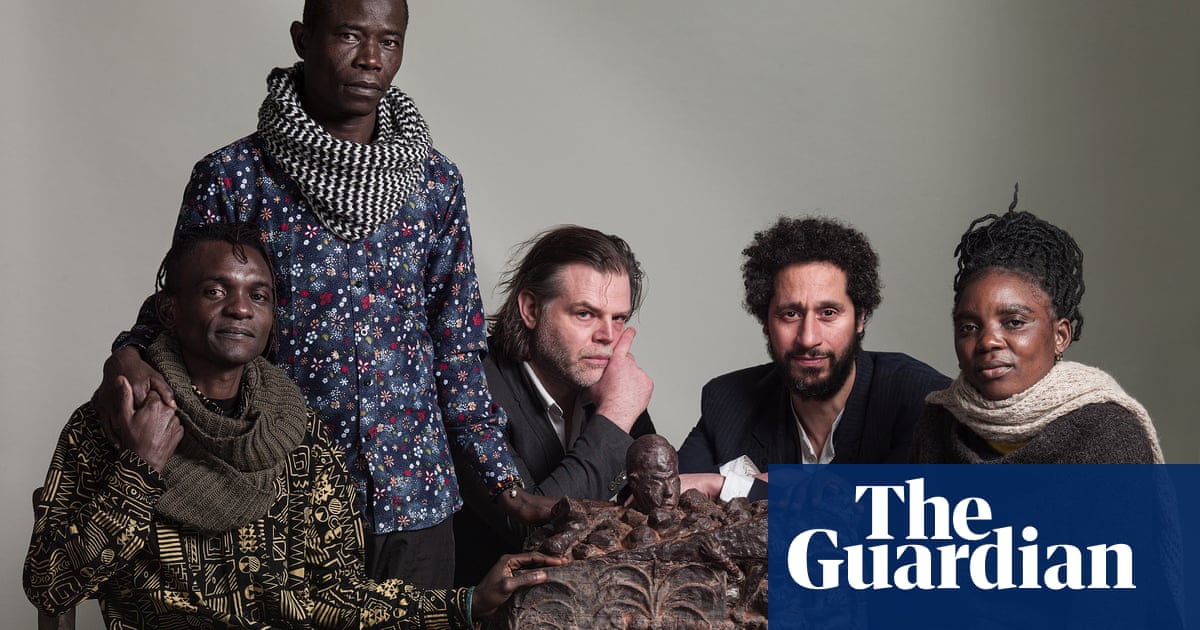
A statue depicting the angry spirit of a Belgian officer beheaded during a 1930s uprising in the Congo will go on display at the Dutch pavilion of this year’s Venice Biennale, seeking to spark a debate about colonial blindspots in the art world – and the Belgian pavilion next door.
The carved wooden figure of colonial administrator Maximilien Balot will not be physically present at the world’s largest art event: a screen will show a livestream from a gallery in Lusanga, in the Democratic Republic of the Congo (DRC), where the artefact will be on display for the six-month duration of the festival.
The current owner, the Virginia Museum of Fine Arts (VMFA), confirmed on Monday that the Dutch pavilion’s plans had prompted it to loan the sculpture to the Congolese gallery from April, answering years of pleas for a temporary return to its place of origin.
“Wherever the Balot sculpture goes, it will generate debate, not just about the restitution of art, but above all about the restitution of the land,” said Ced’art Tamasala, one of the Congolese artists working on the Dutch pavilion.
Balot was decapitated and dismembered during the 1931 Pende people’s uprising against Belgian colonial rule in the Kwilu province of the Congo, which was sparked by the rape of a Pende woman and resulted in hundreds of Pende being tortured and killed.
After the violent crackdown, the officer’s widow was quoted as saying that even though her husband had been killed in “the most horrible fashion […] I understand their revolt”.
Expressionist in form, with a narrow face and protruding eyes, the figure is believed to have been carved within weeks of Balot’s death, when the Pende believed they had driven out the foreign invaders and before retaliatory troops arrived. As a power object, it would have been subsequently charged by a ritual specialist with the spirit of the deceased officer in an attempt to harness his anger. The name of its creator is unknown.
The statue was purchased for $120 (£95) by the American scholar Herbert Weiss while he was on a field trip to Lusanga in 1972, and lawfully sold on to the VMFA in 2015.
An art collective in Lusanga, the Congolese Plantation Workers’ Art League (CATPC), has in recent years tried to secure a loan of the sculpture. Its temporary transfer did not gain momentum, however, until Renzo Martens, a Dutch artist who facilitated the collective’s foundation, was asked to design the Netherlands’ pavilion at the 60th iteration of the Biennale di Venezia.
The sculpture is expected to be on display to the public at the White Cube gallery in Lusanga from 20 April to 24 November 2024, in parallel with the international art exhibition.
The costs of the loan are paid for by the Mondriaan Fund, a foundation responsible for the Dutch entry to the Biennale, though a VMFA curator will accompany the artwork in transit and oversee its installation.
Alex Nyerges, the CEO and director of the VMFA, said: “The loan of a wooden sculpture from an American museum’s collection to a museum in the Democratic Republic of the Congo is also of historic significance, and we hope it will inspire a new era of collaboration and partnerships between museums on both continents.”
As well as showing a livestream of the Balot sculpture, the Dutch pavilion will contain several sculptures fashioned from palm oil, sugar and chocolate, depicting scenes from the Pende uprising.
Located on the western side of the Giardini della Biennale, the Dutch pavilion is about 5 metres from its Belgian counterpart, and Martens said the screen showing the Balot sculpture would be positioned so that viewers were facing the adjacent building.
In 1885, the then Belgian king, Leopold II, laid claim to most of the Congo Basin and imposed a system of ruthless economic exploitation. Congo did not gain independence until 1960, and it took a further six decades for King Philippe of Belgium to express “deepest regrets” for the violence committed during his country’s rule.
Belgium will be represented at the art event by the Petticoat Government collective, with a show themed around folkloric giants from Belgium, France and Spain. The DRC, meanwhile, has never had a pavilion at the biennale.
Tamasala said: “Belgium has benefited enormously from forced labour on the plantations in the Congo; it has a duty to ensure that the longstanding injustice that has excluded the museum’s co-financiers comes to an end.”












